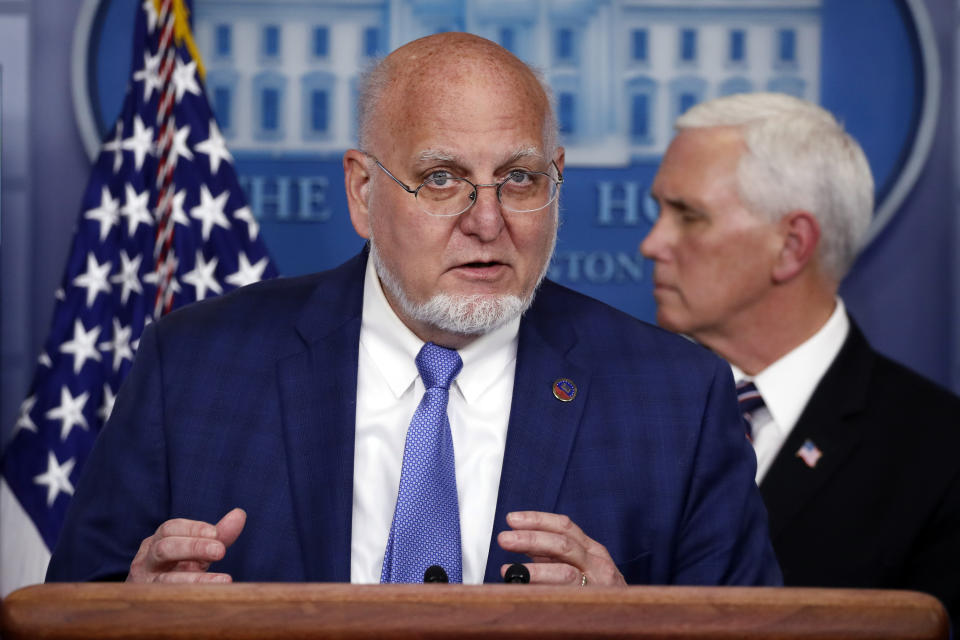CDC director warns coronavirus may recur seasonally
Dr. Robert Redfield, director of the Centers for Disease Control and Prevention, warned Wednesday that a second wave of COVID-19 infections could hit the United States next winter if the coronavirus pandemic follows a seasonal pattern.
“I think we have to assume this is like other respiratory viruses, and there will be a seasonality to it,” Redfield said in an interview with “Good Morning America” host George Stephanopoulos, who announced this week that he had tested positive for the coronavirus.
Redfield said that a resurgence of the virus in the U.S. was “likely,” but not guaranteed.
“Until we see it, we don’t know for certain,” Redfield said. “But it is critical that we plan that this virus is likely to follow a seasonality pattern similar to flu, and we’re going to have another battle with it up-front and aggressively next winter.”
While President Trump has been prodding the nation’s governors to “reopen” the country as early as May 1, the CDC is already looking ahead to the fall, when renewed social distancing measures could be required.
“We are working hard to augment [a public health strategy] now so that as we get into the next season we’ll be able to stay in high containment mode while we complement that with some continued mitigation strategies,” Redfield said.

A study published Tuesday in the journal Science by researchers at Harvard University’s T.H. Chan School of Public Health found that, in the absence of a vaccine, “prolonged or intermittent social distancing may be necessary into 2022.”
Using computer models, the Harvard team looked at how long the virus could persist if it turned out to be seasonal and, under that assumption, concluded that a reemergence of COVID-19 could swamp hospitals if social distancing were not kept in place.
“Under current critical care capacities, however, the overall duration of the SARS-CoV-2 [the scientific name for the coronavirus] epidemic could last into 2022, requiring social distancing measures to be in place between 25% and 75% of that time,” wrote the authors of the study.
Four of the seven coronaviruses known to infect humans are seasonal, with the bulk of cases occurring during the winter months, a University of Michigan School of Public Health study released last week found. Yet it remains unclear whether SARS-CoV-2 will follow that pattern.
“Even though the seasonal coronaviruses found in Michigan are related to SARS-CoV-2, we do not know whether that virus will behave like the seasonal coronaviruses,” said Arnold Monto, the Thomas Francis collegiate professor of epidemiology at the U-M School of Public Health. “Only time will tell if SARS-CoV-2 will become a continuing presence in the respiratory infection landscape, continue with limited circulation as with MERS, or, like SARS, disappear from humans altogether.”
_____
Click here for the latest coronavirus news and updates. According to experts, people over 60 and those who are immunocompromised continue to be the most at risk. If you have questions, please refer to the CDC’s and WHO’s resource guides.
Read more:



